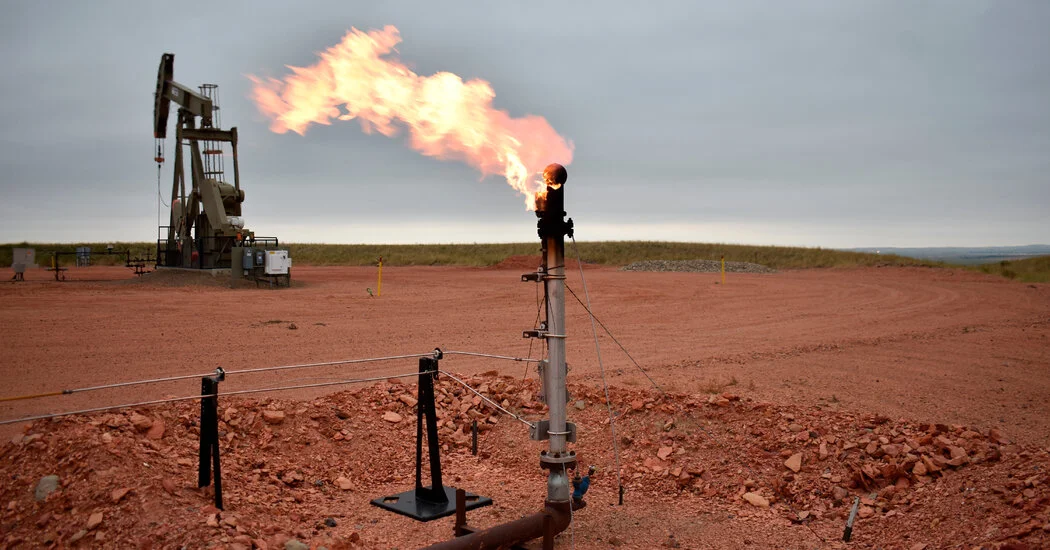The higher the number, the greater the government’s justification for compelling polluters to reduce the emissions that are dangerously heating the planet. During the Obama administration, White House economists calculated the social cost of carbon at $42 a ton. The Trump administration lowered it to less than $5 a ton. Under President Biden, the cost was returned to Obama levels, adjusted for inflation and set at $51.
The new estimate of the social cost of carbon, making its debut in a legally binding federal regulation, is almost four times that amount: $190 a ton.

The new number will be put into action right away: the E.P.A. plans this spring to release final regulations to curb carbon dioxide from cars, trucks and power plants.
The impact on power plants should not be underestimated. This is a win, and hopefully we’ll be able to ween ourselves off fossil fuels and coal more quickly if it hurts these power companies bottom line.
Hopefully this will also move into the private airplane business, and cruise line industry.
Cars will take more time, because we have to cycle the old fossil fuel engines for newer cars that just aren’t cost effective right now. Not to mention, some people will want to keep their gas powered car.

My gas powered car is paid off, any electric car isn’t, and any electric car with equivalent space for my family and bimonthly Costco trips and equipment to make the ride comfortable would run me $50k. Guess which one I’m driving for the foreseeable future.
Nobody is talking about forcing you to get rid of your old car: they’re talking about making new ones be electric, so that we see full replacement as people scrap old ones.

Re-read the comment I replied to and my own. I want an electric car, they’re just not economically feasible for most people, and will likely remain that way for the foreseeable future. People can’t afford electric cars with reasonable seating for a family and space for their stuff.
You can make cheap ones. The Chevy Bolt was just fine. It’s that automakers decided giant trucks for the wealthy are more profitable, and that the rest of us have to live with used vehicles.

The Chevy Bolt is cheap and feels it. Read my other comment on it; I have driven one more than a few times, ridden in one even more often, and it’s absurdly bad compared to even a base level Mazda3 in interior quality. It honestly feels cheaper than my my first car, an early 90’s Toyota Tercel, let alone compared to a modern import. If the Bolt is the future of EVs, we’re doomed, because it’s not fun to drive and every moment in it is a reminder that it’s cheap for a reason. It may be better than the Prius C due to being an EV, but that’s not exactly a high bar to clear, and I’m pretty sure it will lose where it counts, customer satisfaction. I can’t imagine someone with the money to buy something better puts the money down for a Bolt and is happy with their decision after six or 12 months, let alone the decade plus that we all should be keeping our vehicles to defray the environmental cost of their construction.
That leaves people with limited financial options, the people forced to buy either a used ICE vehicle or the cheapest EV when their old car dies; you’ll probably recognize them as the working poor (and their ranks are growing thanks to runaway capitalism). If the solution is to force them into terrible vehicles, perfect; the Bolt should serve as a wonderful reminder that profits are valued above them at every step.
I agree that it is cheap. It’s entirely possible for manufactures to do a lot better at that price point, but it’s less profitable.

Right, and since profits are king, the affordable electric cars will stay terrible because an ICE is $1k or so to manufacture while an electric power train including battery is at least five times that in cost. When you look at a $27k car, tax incentives excluded (especially because some people will be unable to use them), the electric car has to be cheapened, every corner cut, or the profits just won’t be there.
Again, it’s dollar for dollar, when you sit in a $20k Mazda versus a Chevy Bolt that will cost the same if the full $7k tax incentive is realized, the quality difference is tangible. Until that’s addressed, there won’t be people wanting to buy that car.

If your comparing price wise you should probably do it used to used, which while hard at the moment given most EVs are new enough that they haven’t made their way to the used market things will improve with time. Especially given the lower maintenance and longer lifespan of EVs.
I’m also sure your factoring the 7k subsidy and the fuel costs into this comparison already, given that if you keep your cars for a long time costing half to a third per mile driven is a pretty big deal, equating to a savings of about six hundred and fifty dollars a year. Between the both of those you should expect to be able to pay 15k more for an EV and still come out on top if you keep cars for a bit over ten years
Basically that the 30k new Bolt and Leaf are competing price wise against a 15k new suv, or at least they would be if there was any suv on the american market for under 25k.
Of course that higher up front cost isn’t nothing, it’s expensive to be poor after all, but it does factor into these things.
I can’t compare feel, but yes, cheap cars do tend to feel cheap, especially when there is still rather limited competition for the low end market and the Japanese pair continue to not even try. I don’t know what to tell you beyond the working poor will probably put up with it for the extra 10k in their pockets, like normal.
Well that or chevy gets swept away by the Koreans until it gets another bailout and then acts all confused, but i don’t think that’s the drivetrains fault.

It would be nice if these numbers didn’t yo-yo with each administration. Even if one is pro-low price, it must fuck up long term plans tremendously.
(I am pro-high cost of fossil fuels, but want process to increase at a steady and predictable rate. $1 million in steps every 6 months is very different from $1 million in one step at any point in time.)

You are right, but these numbers are intrinsically affected by value-judgements - about how to integrate impacts over time, across different sectors, across rich and poor countries/communities and over probability of such impacts (risk aversion). It’s not so much the science changing, but the values - hence political shifts. It would help if experts could separate these factors more clearly. For example people mention “the discount rate”, but there is not just one - there is a (low) pure time preference for the whole world and higher rates for individuals and companies with finite lifetimes, also higher in rapidly developing countries (this does make sense, given a non-linear welfare function).

Thats huge!
Definitely, and still way below the numbers that have been showing up in the academic literature over the past couple years.
I thought 250 usd/ton was one of those numbers from literature?
Whats proposed nowadays?
Up to $525/ton
Ok. Still 200 is better than 50.

Got a source, and also how you go about keeping yourself updated on that number

The full article is paywalled, but the abstract of this meta-analysis states “In the past 10 years, estimates of the social cost of carbon have increased from US$9 per tCO2 to US$40 per tCO2 for a high discount rate and from US$122 per tCO2 to US$525 per tCO2 for a low discount rate.” Published May 15 of this year.

